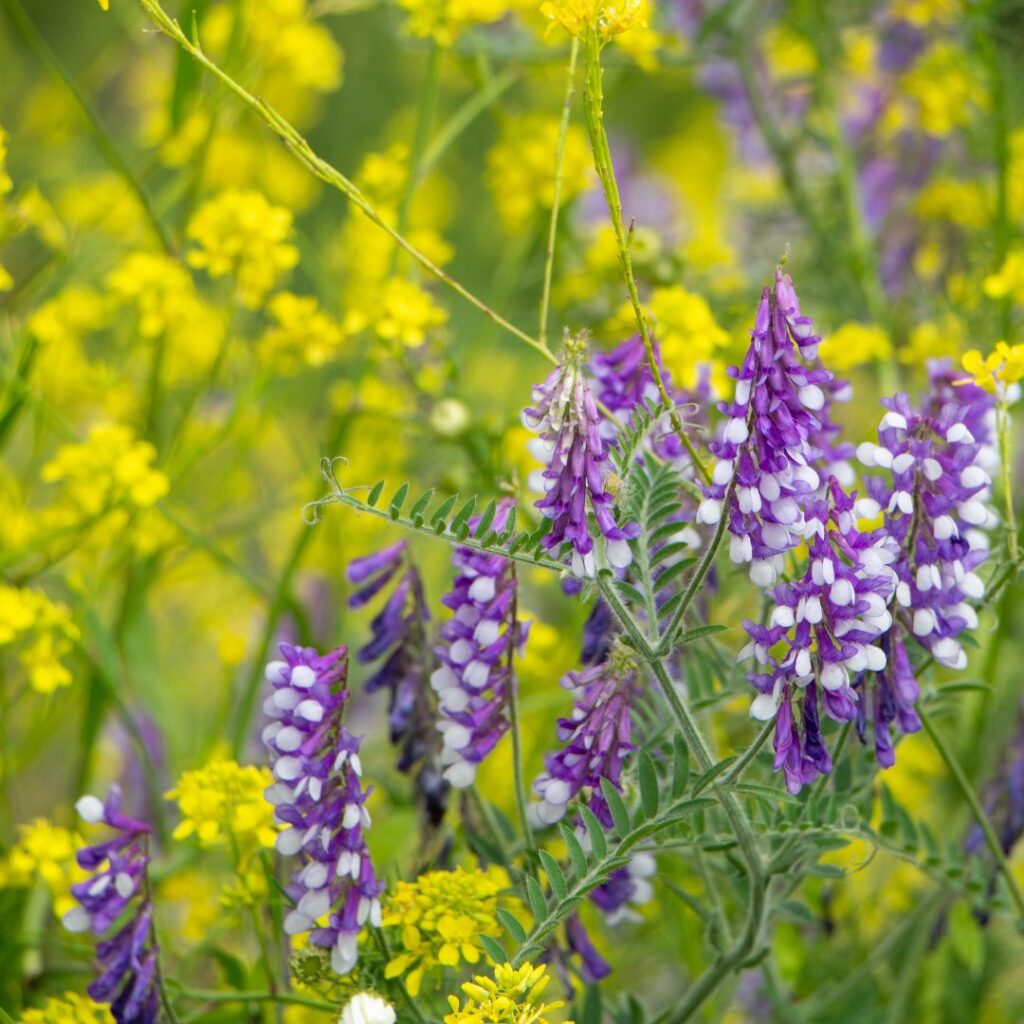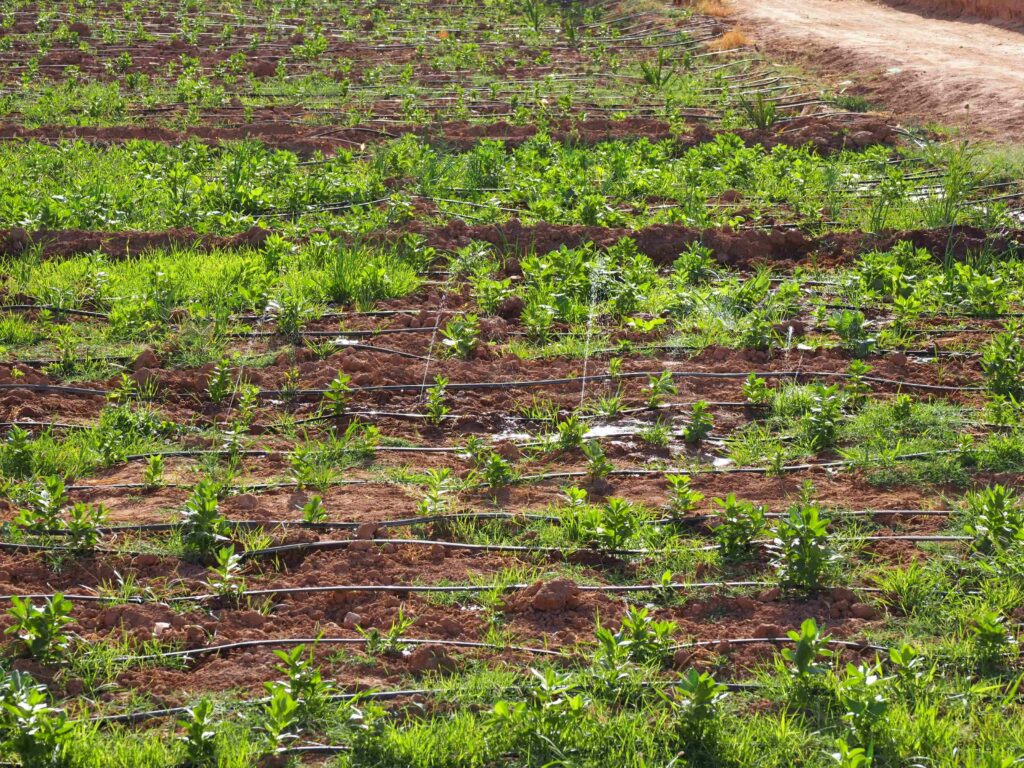Almost every ag space I have entered lately is buzzing with climate-smart chatter, and I couldn’t be happier. Why? These farming practices can offer solutions that simultaneously mitigate the impacts of conventional agriculture on the environment, enhance resilience, ensure food security, support farming livelihoods, provide economic opportunity, and allow us to adapt to the changing climate through sustainable and regenerative practices. Hurray!
Here in the Carolinas, our diverse landscapes span from coastal plains to beautiful mountain ranges. We are seeing shifts in temperature, precipitation patterns, and more extreme weather events that continue to alter the farming landscape. Rising temperatures influence traditional planting and harvesting times, and warmer winters disrupt the chilling hours needed for our abundant fruit crops. Heat stress during the growing season affects crop growth, quality, and yield, ultimately impacting the farmer’s bottom line. One of the most pronounced effects we are seeing is in the precipitation patterns. Increased rainfall and more frequent intense storms lead to soil erosion, nutrient run-off, and waterlogging, while decreased rainfall leads to severe periods of drought where water management strategies are becoming necessary to save our crops.
Climate-smart farming practices are gaining awareness and importance as potential solutions to these challenges. Cover cropping, reduced tillage, crop rotation, water conservation, and the use of technology are essential strategies for maintaining soil health, preventing erosion, and sequestering carbon.
Cover Crops
Cover crops play a pivotal role as climate change reshapes growing conditions. These strategically chosen crops, planted between main season crops, cover and protect the soil from erosion and degradation, suppress weed growth, and attract beneficial insects, lessening the reliance on herbicides and insecticides that negatively impact the environment. As cover crops grow, the root system taps into nutrients in the soil, reducing nutrient leach while safeguarding our valuable water resources. At the same time, these roots enhance soil aeration, promote microbial activity, and contribute to improved soil health and carbon sequestration.
The choice of cover crops depends on your micro-climate, cropping system, soil health goals, and nutrient management needs. Winter rye, crimson clover, hairy vetch, Austrian winter pea, buckwheat, sunflower, daikon, sorghum-sudangrass, and lupine are a few good candidates that will fix nitrogen, increase biomass, alleviate compaction, decrease weed pressure, and increase biodiversity that attracts pollinators and beneficial insects.



Reduced Tillage
Reduced tillage, aka conservation tillage or no-till farming, is the practice of minimizing soil disturbance. This can be through reduced plowing, cultivation, or inversion, positively impacting soil health, water conservation, and carbon sequestration. Reduced tillage preserves the soil’s structure and organic matter, promotes better water infiltration and retention, reduces water evaporation and erosion, increases the soil’s resilience to compaction, fosters biodiversity, and prevents the release of CO2 into the atmosphere.
Equipment needed for no-till or reduced-till varies depending on crops, conditions, and management goals. Commonly used equipment includes row cleaners, no-till planters and drills, roller crimpers, flail mowers, subsoilers, and strip-tillers, which minimize soil disturbance while improving health and infiltration. Existing equipment is often modified or adapted to meet the needs of the task.

Crop Rotation
Crop rotation is an essential part of climate-smart farming, where the goal is to enhance productivity while minimizing our environmental impact. The practice of crop rotation offers many benefits and supports the long-term viability of environmentally responsible farming systems. Here are a few reasons why we use crop rotation as a tool to help achieve our goals.
- Pest and disease management – crop rotation helps break the life cycles of pests, reducing the need for insecticides and decreasing disease build-up over time.
- Soil health and nutrient management – Different crops deplete different nutrients, whereas others replenish. Balancing nutrients is vital to healthy soil, reducing the reliance on synthetic fertilizers and reducing greenhouse gas emissions.
- Carbon sequestration – Certain crops can fix atmospheric nitrogen in the soil. This exchange promotes microbial activity, enriches organic matter, and promotes sequestration.
- Water Management – Combining crop rotation and water management can optimize soil health while efficiently conserving, distributing, and utilizing water, our most precious resource, throughout the changing climate patterns.
Water Conservation
Water Conservation is a crucial step in climate-smart farming and the growing concern of water scarcity. Implementing water-efficient practices will help preserve and protect this precious resource and enhance the resilience of our agriculture systems as it relates to climate change.
Here are a few strategies to help move the needle:
- Efficient Irrigation
- Drip irrigation- giving the water, where needed, at the root zone.
- Sub-surface drip irrigation – beneath the soil surface to reduce loss and weed growth.
- Sprinkler – high efficiency and correct nozzle types allow for optimal distribution and less overspray.
- Irrigation timing – this is crucial! Early morning or late evening is ideal, and only irrigate to the plant’s needs to reduce evaporation and water waste.
- Rainwater Harvesting
- Collect rainwater for use at a later time to support irrigation needs.
- Crop Selection
- Climate-adapted crops or drought-resistant crops that are well-suited to your growing area.
- Water Saving Technology
- Using soil moisture sensors, irrigation controllers, remote sensing, and data analytics, we can optimize water use by supplying water and nutrients necessary for the specific field conditions.

Technology
Technology empowers farmers to adapt to these challenges by providing tools for resource management, informed decision-making, and developing climate-resilient farming systems. Even the smallest farmer can effectively use technology to advance their practices and provide a benefit to the farm.
- Precision Agriculture. This technology uses remote sensing, satellite imagery, GPS, Global Positioning Systems, GIS, and Geographic Information Systems to help farmers accurately map and manage their fields.
- Mobile apps and software; modern tools for increased productivity, sustainability, and profitability.
- Climate monitoring and prediction. Provides historical and current climate data where trends can be shown and informed decisions can be made.
- Education and Knowledge Sharing. My personal favorite – knowledge transfer!
- Online Platforms – Digital platforms and social media are helpful in knowledge exchange and allow for best practice sharing and problem-solving. Want to stay informed about all the latest and greatest in modern ag? Check it out:
- Farmer-to-farmer mentors are valuable for new and beginning farmers. Through mentorship, we contribute to the success of the agriculture sector. The guidance fosters the growth of confident, informed, and resilient farmers who can adapt to changing climate conditions.
Technology has revolutionized modern farming. Integrating technology into farming practices, from very small to very large farms, can enable farmers to harness the power of data to optimize their operations, minimize waste, adapt to the changing climate conditions, and contribute to the needs of our local food systems.
Check out this success story from the No-Till Podcast about Russell Hedrick, a farmer out of Hickory, NC, who has used technology to smash yield records.
Overall, climate-smart farming is a multi-faceted approach that empowers farmers to tackle the challenges of climate change while building a more resilient and sustainable agricultural system for the future of farming. Can the practices offer numerous benefits to farmers while providing environmental stewardship? I believe they can!
Interested in learning more about climate-smart farming? Would you like to be paid to be part of a climate-smart research project? Check out these resources and climate-smart opportunities.
- Southern Piedmont Climate-Smart Project
- Pasa Sustainable Agriculture – Climate-Smart Farming & Marketing Program
About the Author
Kim Butz is CFSA’s soil conservationist, managing the many climate-smart farming projects CFSA is involved with.
Kim has a passion for all things farm and food. She focuses on teaching sustainable and organic practices, and a continued mission to mentor and support small farmers. Kim has 25 years of food service experience as a chef/manager in the private, corporate, and institutional sectors. She has been an advocate for food safety, was an instructor for ServSafe, and was Train-The-Trainer certified through Culinary Masterworks.



